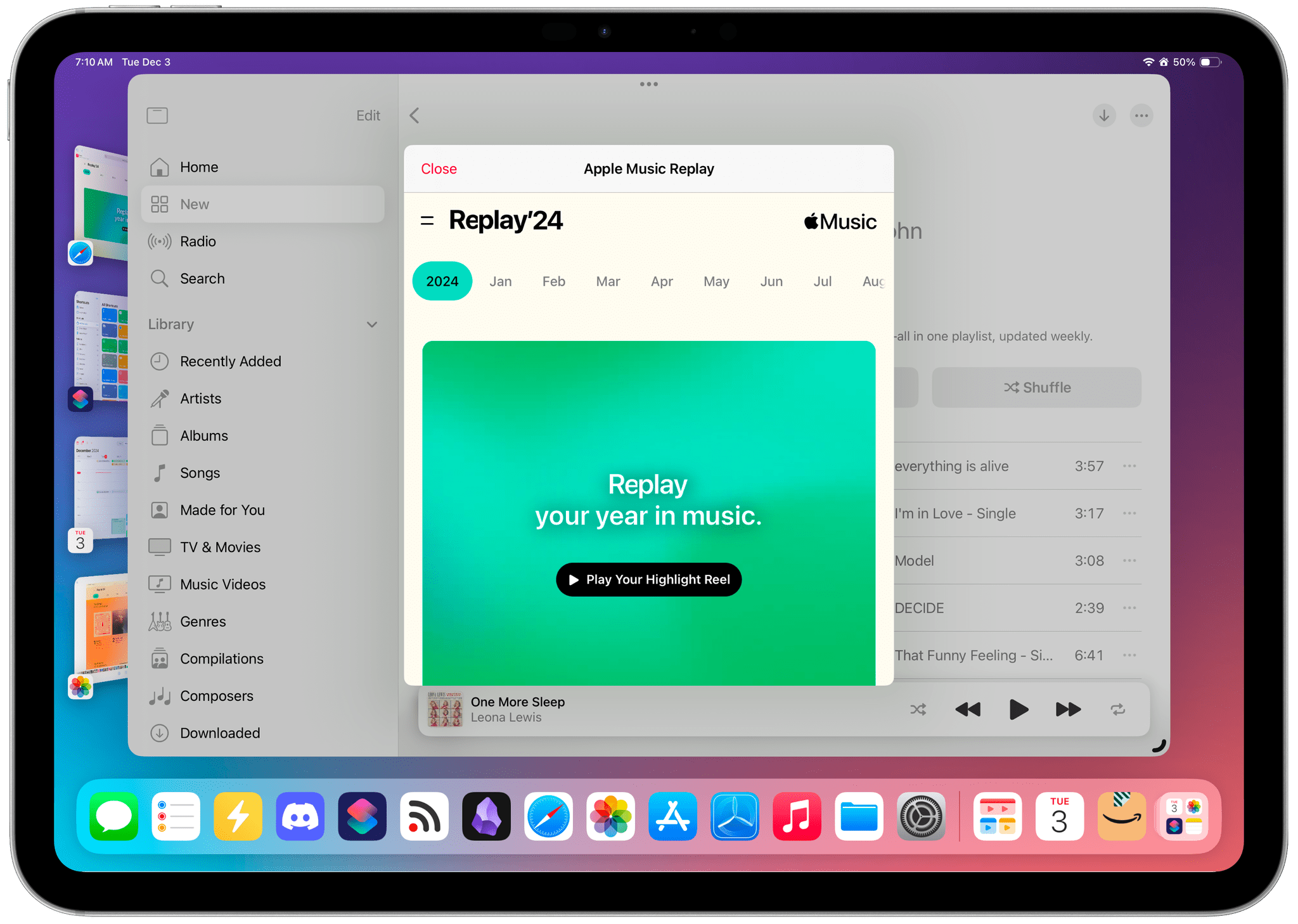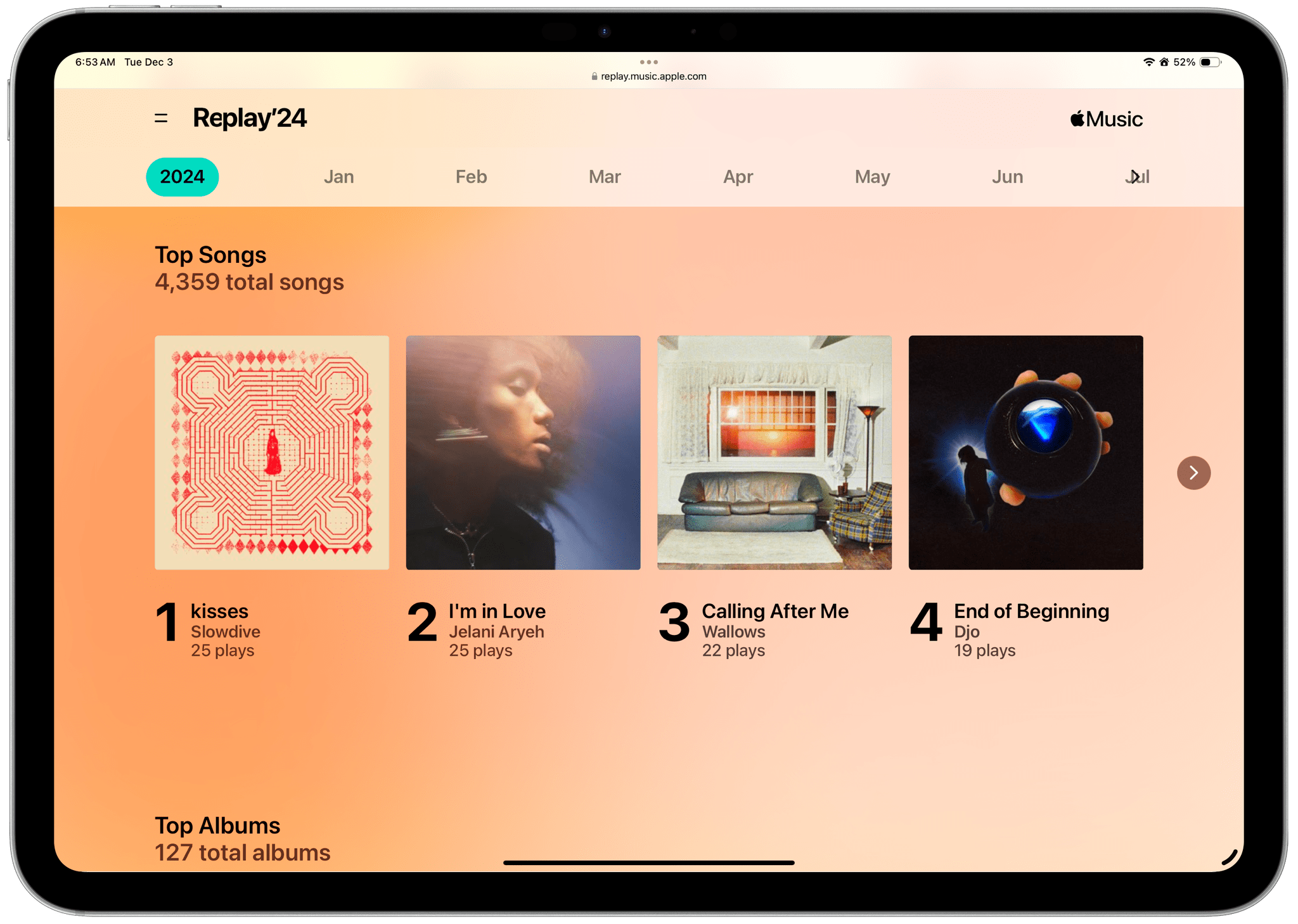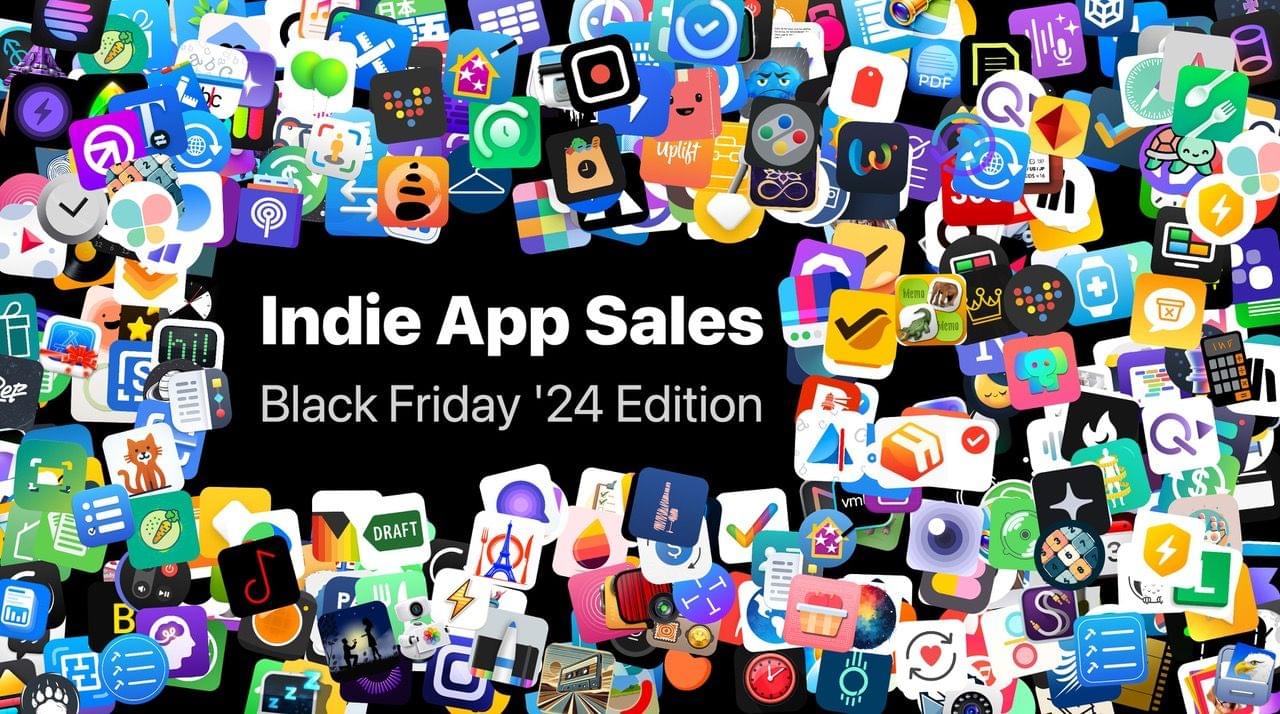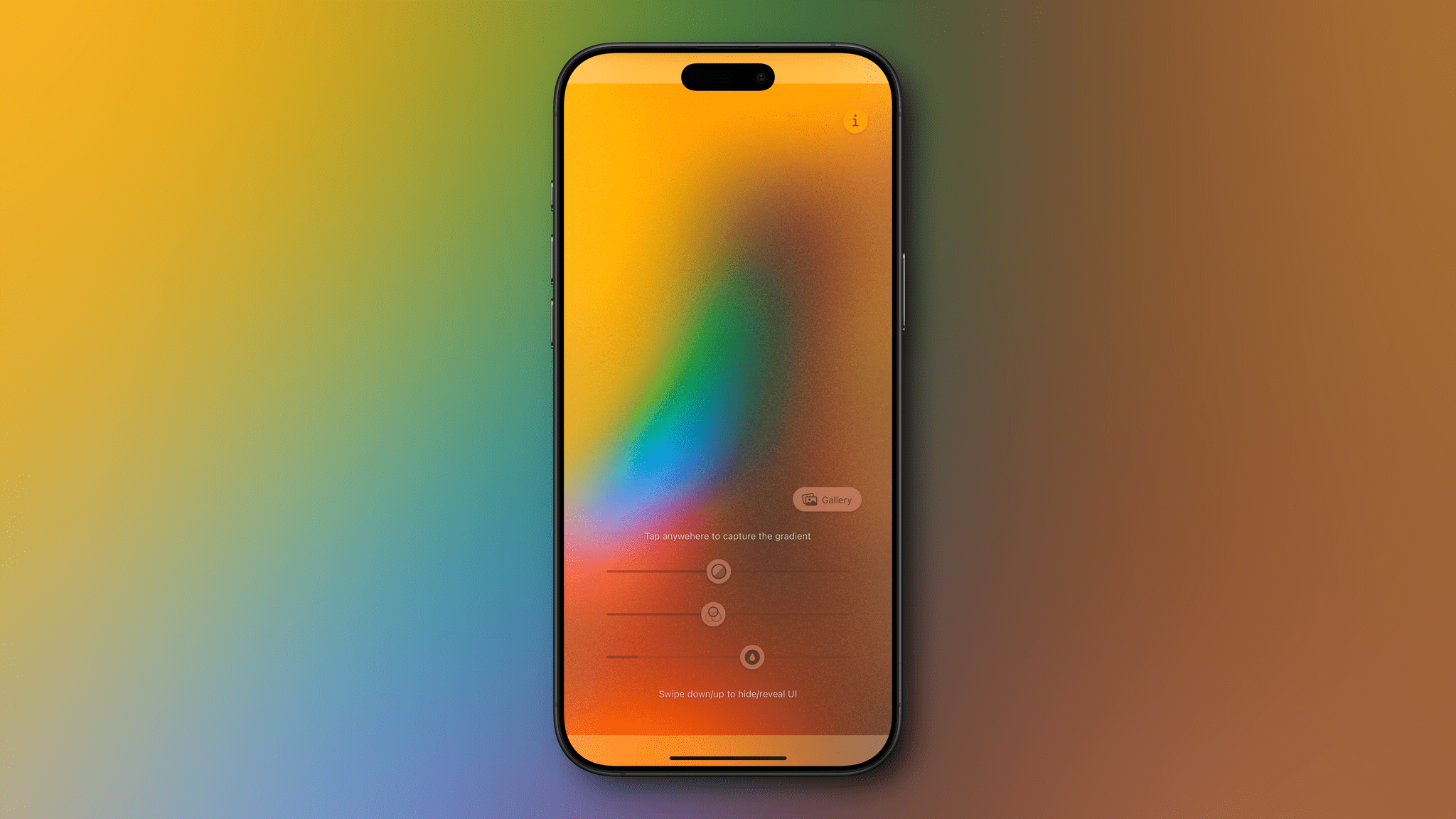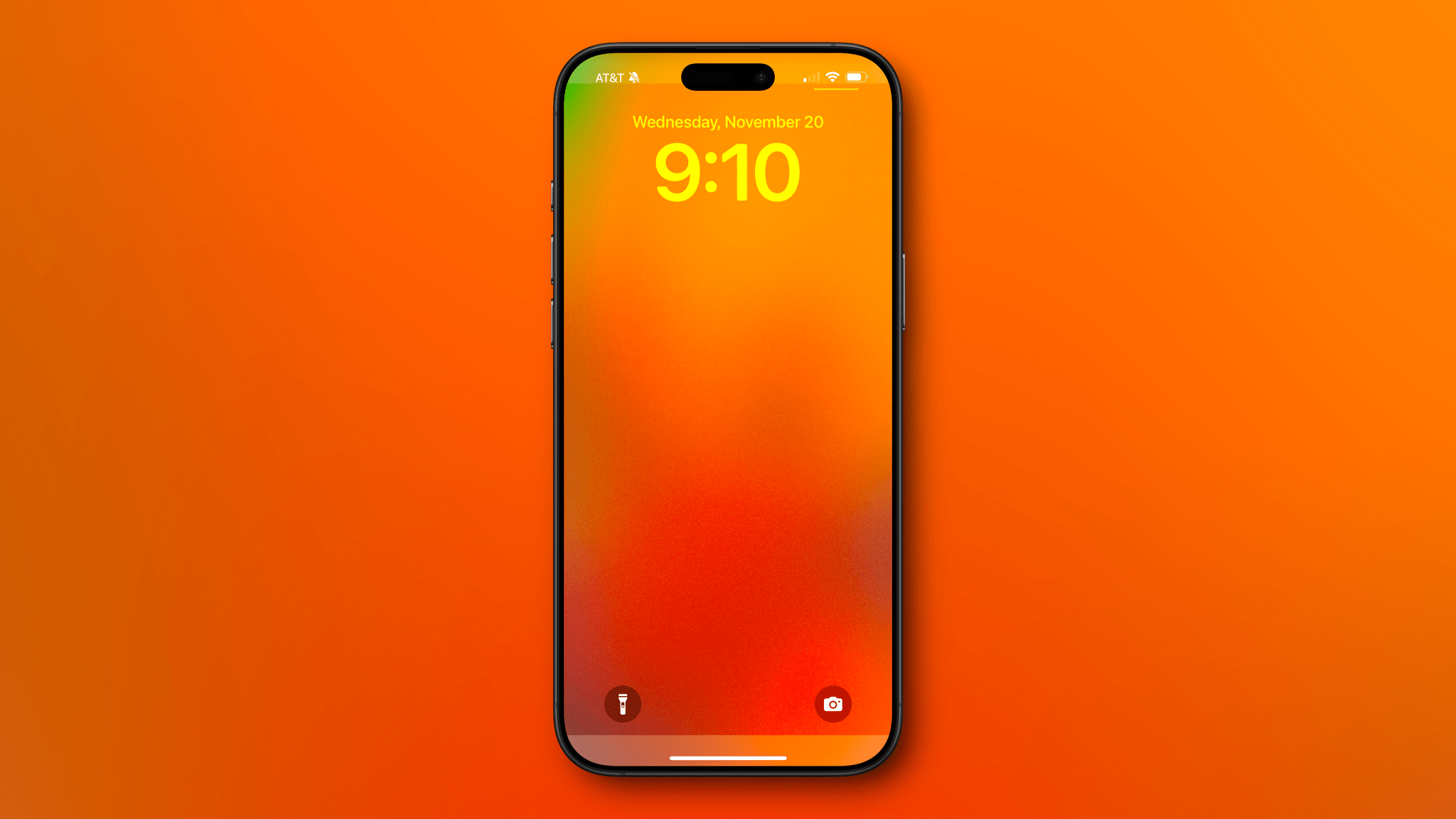Apple has released its annual Apple Music Replay overview of subscribers’ listening statistics for 2024. The recap can be accessed on the music.apple.com/replay, where you’ll find details about the music to which you listened throughout the year, including your top albums, songs, artists, playlists, and genres. If you’d rather browse Replay in the Music app, you can do that too, with the ‘Open’ in Music button that appears at the top of the webpage and opens the same content as a popup over your Apple Music library.
At the beginning of Replay, there’s an animated recap with highlights of your year in music set to the songs you enjoyed throughout the year. Replay also calls out listening milestones like the total number of minutes listened and the number of artists and songs played. Plus, subscribers can browse through their statistics by month. Also, at the bottom of Replay, you’ll also find a link to your Replay ‘24 playlist, with the top 100 songs you listened to in 2024.
The timing of Replay ‘24 is perfect. I’ve begun preparing my list of favorite albums of 2024 for this week’s MacStories Unwind, which will be out Thursday for Club MacStories members and for everyone else on Friday, and as my Replay playlist makes abundandly clear, 2024 has been a great year for music.
To view your own Replay 2024 statistics, visit music.apple.com/replay.


